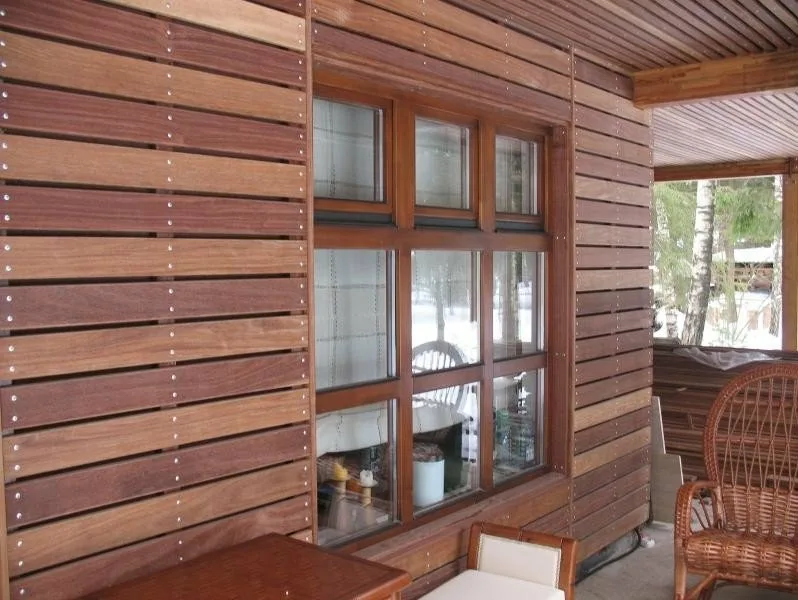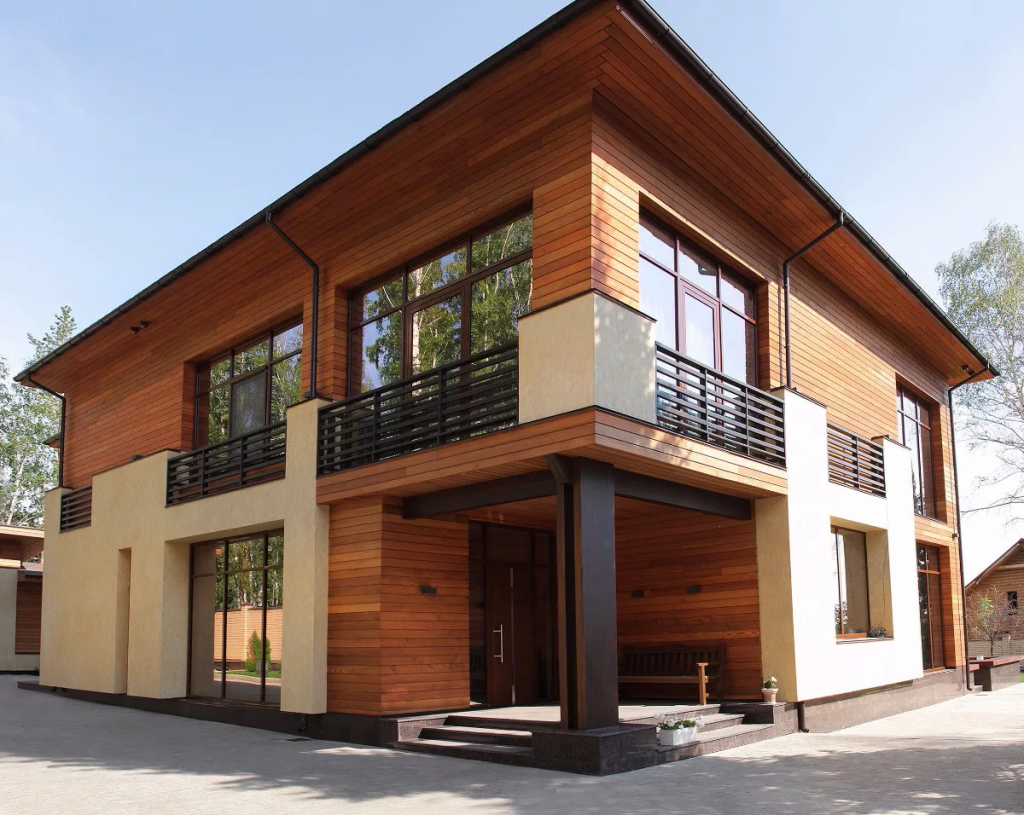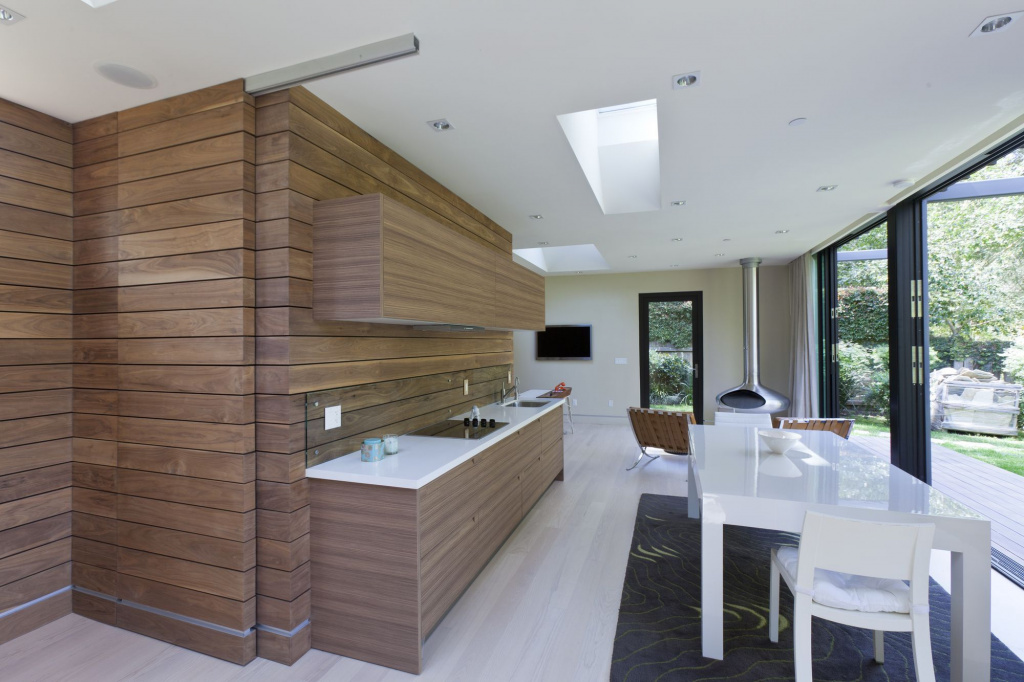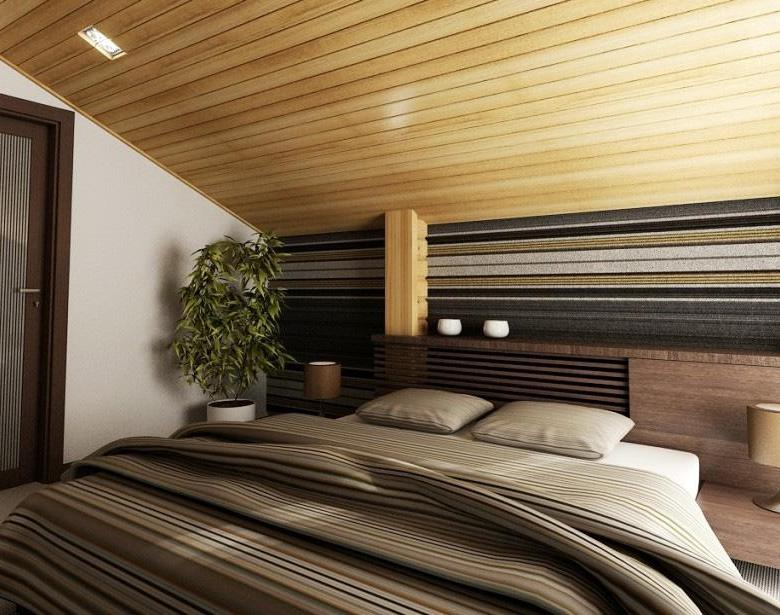Larch plank in exterior and interior decoration
Planken is the only facade board without a tongue and groove joint, which provides a technological gap for ventilation. And larch is the only wood in our latitudes that becomes harder and stronger with moisture. Planken and larch are worth each other, that’s why we made a big separate review for them.
Facade finishing with larch planken
In Russia, northern Europe and Scandinavian countries, larch planken facades are often used. They can be recognised by their characteristic smooth texture and the original laying of the panels. Laying, by the way, is one of the peculiarities of planken.
Board straight profile is laid with visible and hidden fasteners. When fastened in the visible, use self-tapping screws with a zinc coating and the correct cut. From the coating depends on whether the caps will not start to «weep» rust in a year or two, spoiling the wood.

Correct sieving will allow to do without drilling and countersinking of larch during installation. Very effectively looks fixing visible method on self-tapping screws with a decorative cap. Lined up in a neat vertical line, they imitate a brutal riveted seam and look best on a board of contrasting toning: light self-tapping screws — dark planken or dark self-tapping screws — light planken.
In the case of hidden installation façade fasteners connect the battens and the planken under the board. This fastener is completely invisible from the outside. With hidden fastening, the boards are laid either in a standard way or in a staggered manner, and both variants are good, each in its own way.

The bevelled planken is laid overlapping. In this case, the edge cut hides the technological gap. And here is important not so much the decorative component, although the trim bevelled planken and really looks interesting, as functional: the bevelled part closes the bottom board from rain, keeping the air supply for ventilation. Larch is not afraid of moisture, but if rainwater or condensate accumulates under the cladding, the waterproofing and thermal insulation of the facade will suffer and the purlins will begin to deteriorate.
By the way, that is why we recommend buying larch timber for the purlins. By the way, larch planken for finishing is used not only solo. It looks harmoniously in combination with plastered walls, clinker and natural stone, combined with facing tiles. In a combined finish, larch planken plays the role of an original visual accent: it frames balconies and terraces, highlights window openings and entrance groups, delimits floors.
Interior finishing with planken
In residential houses, larch planken is mainly used to finish the ceiling. Here the board has more possibilities: horizontal and diagonal laying, in the classic style or in a split, with slatted edging and joint to joint.

With planken on the ceiling, designers masterfully play with enclosed terraces, spacious living rooms with panoramic windows, attics and, of course, swimming pools and saunas. In pools and saunas, given the wood’s resistance to temperature and humidity fluctuations, larch planken is the best choice. In a humid environment, the cladding does not deteriorate and rot, and thanks to the 2-4 mm expansion joints, it retains a stable geometry.

On the walls larch planken is more often used as a decoration, for example, on the accent wall, only above the fireplace or in the recreation area.
For fragmentary finishing of the house larch is chosen not for its resistance to moisture, but for its mechanical strength, low knotting and dense homogeneous wood with a glossy sheen. Well sanded, larch shines even without lacquering. It is enough to cover it with a glossing compound or wax to enjoy the natural gloss of healthy wood. However, in modern interiors and lofts you can find tinted vintage larch planken, luxurious brushed and even patinated panels. The wealth of wood finishes leaves a lot of scope for imagination!